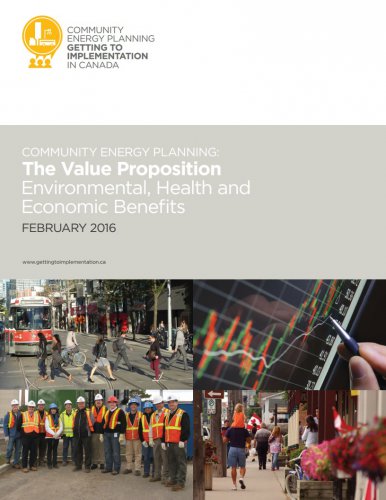Canadian communities have untapped opportunities to strengthen local economies, reduce current and future energy costs and greenhouse gas (GHG) emissions, and create jobs by investing in smarter and more integrated approaches to energy use at the local level. Communities that have analyzed these opportunities have consistently identified a strong value proposition for these approaches, with solid economic returns on investments, environmental gains, health benefits, and improved quality of life for local residents. Energy is a significant cost in Canadian communities.
Canadian cities, towns and villages have influence over approximately 60 percent of energy consumption and over half of all GHG emissions in Canada. Consequently, communities have the potential to make significant contributions to addressing Canada’s current and future energy and climate challenges.
A Community Energy Plan (CEP) is a tool that drives community priorities around energy with a view to increasing efficiency, reducing emissions and driving economic development.
This report draws primarily on the findings of six comprehensive economic analyses of CEP actions and programs, and case studies to illustrate the value proposition of CEP implementation to communities across Canada.
Download Community Energy Planning: The Value Proposition
Download the Executive Summary Here
Table of Contents
Executive Summary
Introduction: Community Energy Planning: The Value Proposition
Section 1: CEPs: A Smart Approach to Achieving Environmental and Community Health Goals, as Well as Economic Ones
Section 2: Energy: A Significant Cost to Communities, Businesses, and Households
Section 3: Keeping More Energy Dollars in the Local Economy
Section 4: Contributing to Savings, Local Economic Development, and Jobs
Section 5: Mitigating Risk: Future Carbon Emissions Pricing and Regulation, and Future Energy Costs
Conclusion
Appendix I
Approaches to Economic
Analysis in CEPs
References





